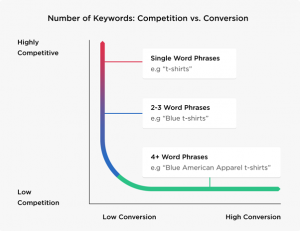7 steps in content planning
Businesses that want to connect with their existing and potential customers must plan and execute their content strategy carefully.
You would want to communicate with your customers to provide value and to achieve your business goals.
Well written pieces of content that are shared through different channels can drive high quality organic traffic.
In depth research about your customers and your message must precede the creation of the content. Thorough planning is required to put your content marketing strategy on the winning path.
Following are 7 steps for effective content planning.
1. Define your goal – Before you start content creation as a part of your marketing strategy, you must have a clear and well-defined goal. Without such a goal you will never know if your strategy is achieving what it has set out to achieve.

You should write down your SMART goals – Specific, Measurable, Attainable, Relevant and Time based goals.
2. Conduct persona research – Understanding your customers and finding out the type of content they want to read will go a long way in making a right content strategy. You need to do persona research and find demographic details of your typical customer.
What are their likes and dislikes, what are their fears, what are their preferences and what is their attitude; all these details will help you in getting a complete understanding of your customers.
3. Run a content audit – You need to audit your present content to see which types of content are performing well and which are not performing well.
The content audit will help you understand more about your customers on the type of content they like and dislike.
A good content audit will analyze your business’ content and its overall performance in terms of different metrics and channels.
4. Analyze your content marketing channels – As a business organization you will have many content marketing channels at your disposal. You need to analyze each one of them and find out which marketing channel to use for the various types of content you have.
Based on your segments and content type, you can find out the channel that will help in maximum reach of your content. You must choose that channel where your customers and prospective customers come often to gain maximum reach.
5. Brainstorm content ideas – The most important step in content planning is brainstorming content ideas to communicate your marketing message to the customers.
Based on the demography of your customers and their interests and preferences, you can create and disseminate information or content of different types.
(Read about 5 W’s of content marketing)
6. Describe the type of content you want to use – Different user groups would have different preferences on the type of content.

Some user groups would like to peruse long form content like a whitepaper or a case study, while some other groups may prefer images to convey the information.
There must be a mix of different types of content through which you should distribute your marketing message.
7. Publish and manage the content – Make use of all channels and publish your content based on the demographic characteristics of your customer base.
Your type of content is another determinant on the type of channels that you could use. For instance, if your information is meant to be distributed as an image, it is important to aim at channels like Instagram and Pinterest.
Digital marketing India team of Calpine Group can help you in content planning to drive organic traffic to your website.






